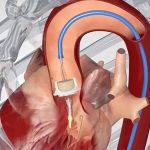Who are the Aboriginal and Torres Strait Islander peoples of Australia?
Aboriginal and Torres Strait Islander peoples are the first peoples of Australia. They have lived in Australia for more than 60,000 years.
There are many different Aboriginal and Torres Strait Islander groups across Australia. Each group has their own:
- culture
- language
- beliefs
- practices
The Aboriginal and Torres Strait Islander concept of health isn’t about the individual person. Health is a whole-of-life view that includes:
- social
- emotional
- cultural wellbeing of the community
In 2021, the number of Aboriginal and/or Torres Strait Islander peoples was about 881,593. This is just over 3.4% of Australia’s total population. The number isn’t exact because not everyone completes the Census or answers the question on Indigenous status.
The Aboriginal and Torres Strait Islander population is younger than the non-Indigenous population. In 2016, the median age of the Aboriginal and Torres Strait Islander population was 23 years, compared to 38 years for the non-Indigenous population.
Most Aboriginal and/or Torres Strait Islander people live in New South Wales.
What is the health of Aboriginal and Torres Strait Islander peoples like?
In 2020, the median age of death was 61 years. This has increased from 57 years in 2010.
The life expectancy for Aboriginal and/or Torres Strait Islander peoples born between 2015 and 2017 was 72 years for males, and 76 years for females. In 2020, the most frequent causes of death were:
- coronary heart disease
- diabetes
- lung and airway conditions such as asthma and chronic obstructive pulmonary disease (COPD)
- cancers of the lung and airways
- self-harm
Generally, Aboriginal and/or Torres Strait Islander peoples who live in remote areas are sicker and die younger than those living in non-remote areas.
The impact of colonisation
Colonisation has led to negative outcomes on the physical and mental health of many Aboriginal and Torres Strait Islander peoples.
Before 1788, Aboriginal peoples lived a semi-nomadic life in family and community groups.
The impact of colonisation includes:
- disconnection from culture, family, and Country
- food and resource insecurity
- intergenerational trauma
- marginalisation
- racism and systemic discrimination
- poverty
What is a strengths-based approach to talking about health?
Often the health and wellbeing of Aboriginal and Torres Strait Islander peoples is compared to that of non-Indigenous Australians. This approach is called a deficit model. It places responsibility for the problems with the individuals or communities.
Instead, there is a move towards focussing on understanding measures of health and wellness. This is called a strengths-based approach. It acknowledges the strength and resilience of Aboriginal and Torres Strait Islander peoples in sustaining the world’s oldest living cultures.
What are some positive health outcomes?
Over time, there have been improvements in birth and pregnancy outcomes. These improvements are:
- more mothers are attending antenatal care in their first trimester
- less mothers are smoking during their pregnancy
- less babies are born small for their age
Another improvement has been seen in trachoma control in Aboriginal and Torres Strait Islander communities. Rates of active trachoma in children in selected at-risk communities decreased from 15% in 2009 to 4.5% from 2013 to 2019.
What are Aboriginal Community Controlled Health Organisations?
The National Aboriginal Community Controlled Health Organisation (NACCHO) is the peak body for Aboriginal and Torres Strait Islander health.
NACCHO represents 144 Aboriginal Community Controlled Health Organisations (ACCHOs) across Australia.
Local Aboriginal and Torres Strait Islander communities run these ACCHOs.
There are over 300 clinics across Australia. They deliver holistic, comprehensive, and culturally competent primary healthcare services.
NACCHO:
- gives advice to the Australian Government on policy
- advocates for community-developed health solutions
- improves health outcomes for Aboriginal and Torres Strait Islander peoples
The first ACCHO, Redfern Aboriginal Medical Service, opened in 1971.
What is the National Agreement on Closing the Gap?
In 2008, the Australian government launched the Closing the Gap framework. It aimed to reduce the disadvantage faced by Aboriginal and Torres Strait Islander peoples.
In 2019, the responsibility for Closing the Gap was taken over by the National Indigenous Australians Agency in partnership with Indigenous Australians. The new National Partnership Agreement on Closing the Gap is signed by:
- the Coalition of Peaks
- all Australian governments
- the Australian Local Government Association
The Coalition of Peaks is a group of over 70 Aboriginal and Torres Strait Islander community-controlled organisations across Australia. This includes both peak and member organisations.
The National Agreement is developed around needs identified by Aboriginal and Torres Strait Islander peoples.
It includes 4 Priority Reforms to change the way governments work, new government accountability measures and shared monitoring and implementation arrangements.
The Priority Reforms aim to:
- Develop and strengthen structures to ensure Aboriginal and Torres Strait Islander peoples are involved in shared decision making at the national, state and local or regional level.
- Develop Aboriginal and Torres Strait Islander community-controlled services to deliver Closing the Gap programs.
- Ensure all mainstream agencies:
- contribute to Closing the Gap
- improve accountability
- respond to the needs of Aboriginal and Torres Strait Islander peoples.
- Ensure Aboriginal and Torres Strait Islander peoples can access and use locally relevant information. This can help show local priorities.



